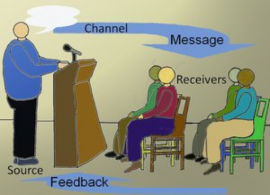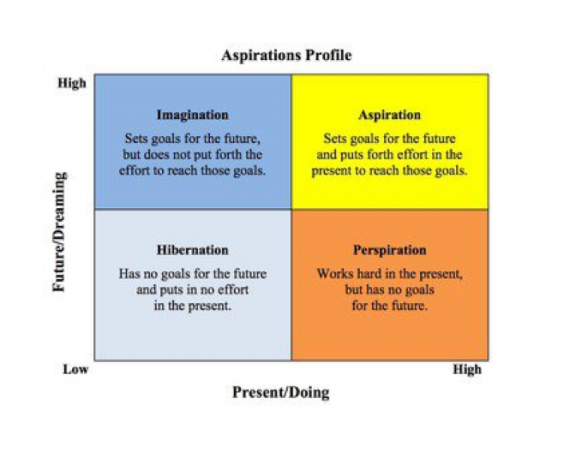Flipped Leadership: Engaging the Unengaged
5 november 2015
'Flipping the classroom' is inmiddels een bekend concept: door lesstof en andere bronnen buiten de les om, bijvoorbeeld via internet, aan leerlingen beschikbaar te stellen, kan de lestijd besteed worden aan verdieping. Tijdens de les geeft de leraar dan geen les in de traditionele zin, maar is er voor leerlingen ruimte om vragen te stellen. Het leidt tot een hogere betrokkenheid van leerlingen en geeft de leraar tijdens schooltijd meer ruimte om aandacht te besteden aan verschillen tussen leerlingen in niveau en behoefte. In dit artikel legt Peter M. DeWitt uit hoe je dit concept kunt doortrekken naar het niveau van schoolleiding en leraren. Door vergaderingen anders voor te bereiden, is er tijdens de vergadering zelf meer ruimte voor verdieping. Het leidt tot meer betrokkenheid van leraren, meer focus, en congruentie van werkprocessen in de hele school. It's not often that I find myself reading doctoral dissertations in my spare time. However, just like finding a good book in the airport bookstore before you board a flight, sometimes doctoral dissertations can provide an intriguing read that may help shape a different way of thinking...or support the way we have always thought.
It's not often that I find myself reading doctoral dissertations in my spare time. However, just like finding a good book in the airport bookstore before you board a flight, sometimes doctoral dissertations can provide an intriguing read that may help shape a different way of thinking...or support the way we have always thought.
I know...that doesn't sound believable. But it should, because I found one.
It comes from the work of Rachel Eells, and her doctoral dissertation was accepted and published by Loyola University in Chicago in 2011, which you can read here. Eell's dissertation focused on collective teacher efficacy and was titled, Meta-Analysis of the Relationship Between Collective Teacher Efficacy and Student Achivement, and it helps support everything we know about adult learning and behavior. Her dissertation has helped me move my own learning dial a little more. According to Eells (2001. p. 51):
"Together, people can accomplish that which one person cannot. Social action depends on the belief that a group can effect change. Collective efficacy helps people realize their shared destiny, enabling agency at the group level."
And that's why I believe flipped leadership, when done correctly, can have massive effects on the learning that takes place among the adults in a school building, and trickle down to the students as well. Flipping leadership is taken from the flipped classroom model.
The flipped classroom model means we, as educators, provide students with information ahead of time so they can absorb it on their own, and prepare themselves for deeper learning when they get together with peers and their whole class.
Flipped leadership just puts the concept at another level.
Leaders co-construct a faculty focus with the building level stakeholder group before the faculty meeting, and send out resources such as blogs, articles or videos (You Tube, or self-created) to staff before a meeting so they can all dive down to a deeper level as a faculty together. There are many reasons why we, as leaders, should figure out innovative ways to engage staff in learning.
One powerful piece of research from Ashton et al that Eell's focused on in her dissertation is the following. Ashton & Webb (1986) found:
Teachers with low teaching efficacy don't feel that teachers, in general, can make much of a difference in the lives of students, while teachers with low personal teaching efficacy don't feel that they, personally, affect the lives of the students.
Teachers with low efficacy don't feel as though they "can make a difference in the lives of children." We should be saddened and a bit shocked that there are teachers who do not believe they can make a difference in the lives of children. As teachers, most of us got into the profession because we had a teacher that had a profound impact on us as children.
It begs the question...do you as a leader believe you can make a difference in the lives of your teachers?
Through a building level stakeholder meeting (i.e. BLT, PAC, etc.) leaders can co-construct faculty meeting goals that focus on how teachers can better provide effective feedback, growth mindset vs. fixed mindset actions, negative vs. positive interactions with students (Knight), building dialogue among students, and much, much more. There are endless possibilities to what leaders and teachers can focus on together. And it can have a profound impact on teachers who feel as though they don't have an impact on the lives of students.
Collective Teacher Efficacy
John Hattie, someone I work with as a Visible Learning trainer, believes that we do not focus enough of our attention on student learning. He believes that we talk too much about adult issues within the classroom and school. Let's face it, teacher observations have always been about focusing on the teacher when in reality we should call them student observations because we need to spend our time focusing on student learning.
We need to shift our mindsets to what matters, and that is the students.
In What Works Best In Education: The Power of Collaborative Expertise, John Hattie writes:
If we are to truly improve student learning, it is vital that we identify the most important barrier to such improvement. And that barrier is the effect of within-school variability on learning. The variability between schools in most Western countries is far smaller than the variability within schools.
For example, the 2009 PISA results for reading across all OECD countries shows that the variability between schools is 36 per cent, while the variance within schools is 64 per cent (OECD 2010).
By flipping faculty meetings and focusing on co-constructed goals, we can help minimize the gap that exists between our teachers who are in need of growth and those who are our high flyers. We can do this by holding teachers accountable for actively engaging in faculty meetings and bringing evidence related to the goals that we focus on together.
Teacher Voice
One last piece of research that has helped shape my thinking, and builds upon the reason why leaders need to flip their leadership and drop the unnecessary pieces of the old faculty meeting model in favor of fostering a more professional development model of faculty meetings, comes from the work of Russ Quaglia. In their best selling book Student Voice: The Instrument of Change Russ Quaglia and Michael Corso, both of whom I work with as a student voice advocate, provided the Aspirations Framework. In the framework pictured below (courtesy of QISA) you can see that we all have four types of students entering into our schools every day. They are in the stages of hibernation, perspiration, imagination or aspiration. It's not just students who find themselves in these various stages. Teachers and leaders find themselves there too.

By flipping faculty meetings and focusing on learning, leaders can engage some of the unengaged. Through the collective thoughts and actions of the teachers on staff, leaders can help teachers in the perspiration stage find goals, and those in the imagination stage find ways to achieve their goals.
In the End
Sometimes information comes at us that helps us put all of the pieces together. Hattie's emphasis on learning, the results from PISA (read Andreas Schleicher's guest blog about the role of PISA here), Eell's focus on helping teachers increase their level of efficacy in order to build collective teacher efficacy as a staff, and Quaglia and Corso's framework around aspirations help us understand that we need to find ways to engage our staff and not just leave them to their own devices.
Flipping leadership is not a gimmick, just like the flipped classroom model is not a gimmick. Through flipping leaders can provide an avenue to focus on learning, and help foster the collaboration in adults that we all want to see in our students.
Watch Russ Quaglia explain why paying attention to student voice is important:
https://www.youtube.com/watch?v=u2xX382OIME&feature=youtu.be
Creative Commons photo courtesy of Wikipedia.
First published October 30st, 2015 on the Education Week weblog. Reblogged with permission.
References
- Ashton, P. T., & Webb, R. B. (1986). Making a difference: Teachers' sense of efficacy and student achievement. Longman Publishing Group.
- Eells, R. J. (2011) Meta-Analysis of the Relationship Between Collective Teacher Efficacy and Student Achivement. Chicago: Loyola University (doctoral dissertation). Retrieved November 3, 2015 from http://ecommons.luc.edu/cgi/viewcontent.cgi?article=1132&context=luc_diss
- Hattie, John (2015). What works best in education: the politics of collaborative expertise. Online publication. Retrieved November 3, 2015 from: https://www.pearson.com/content/dam/corporate/global/pearson-dot-com/files/hattie/150526_ExpertiseWEB_V1.pdf
- Quaglia, R.J. and Corso, M.J. (2014). Student Voice. The Instrument of Change. Thousand Oaks, CA: Corwin Press


Reacties